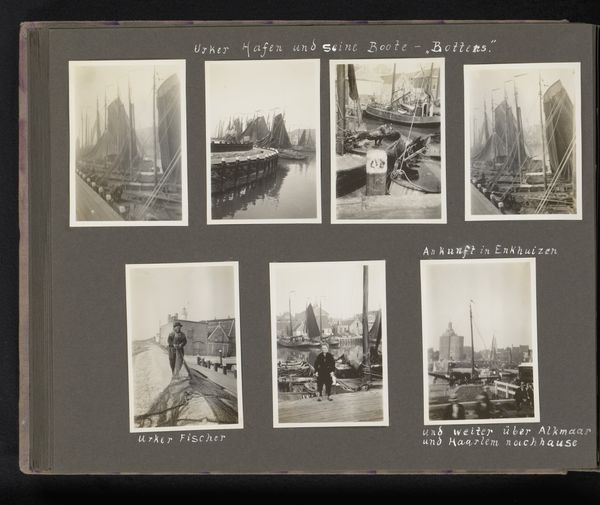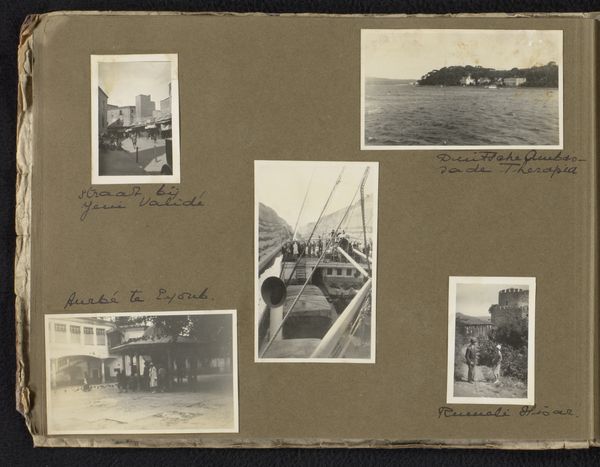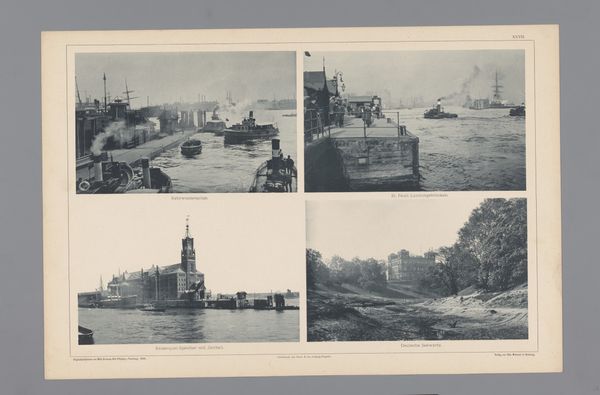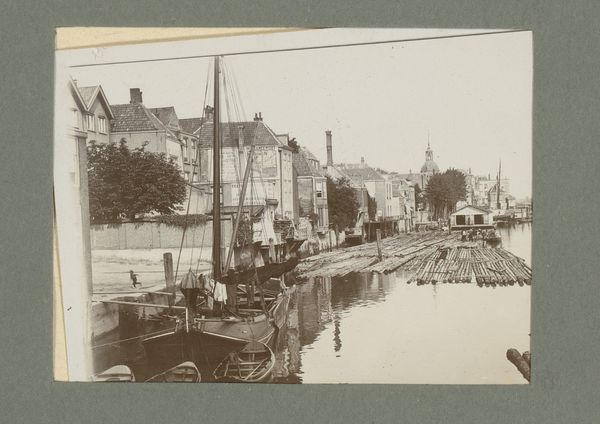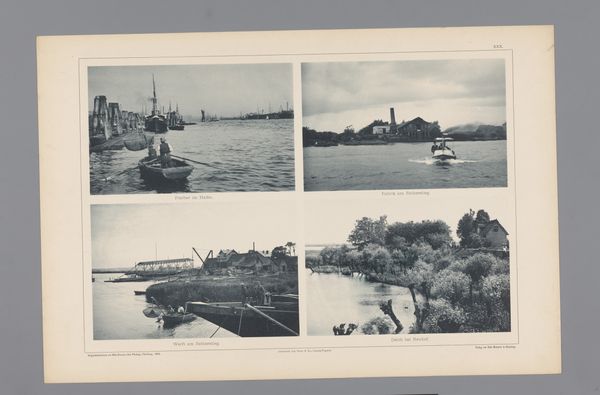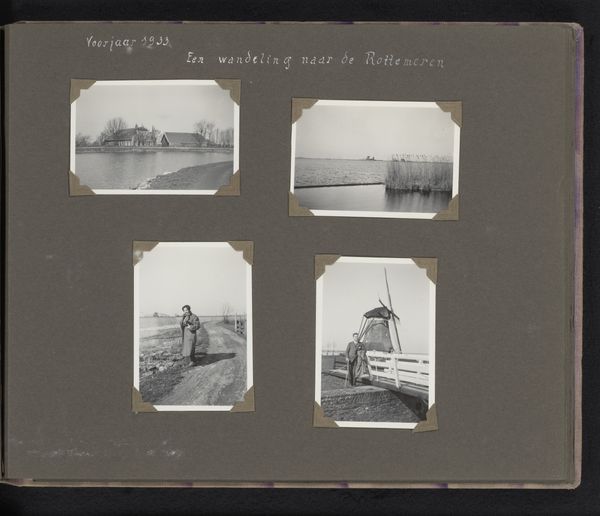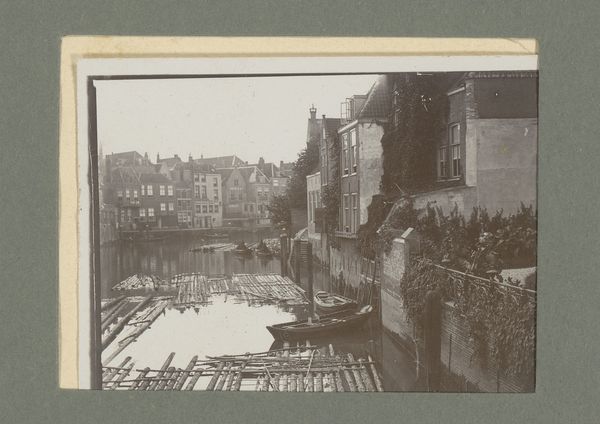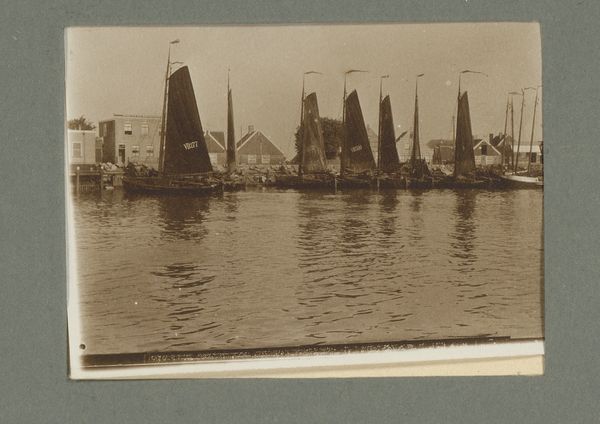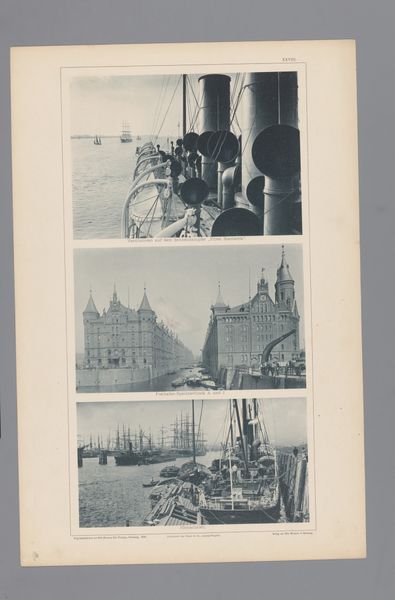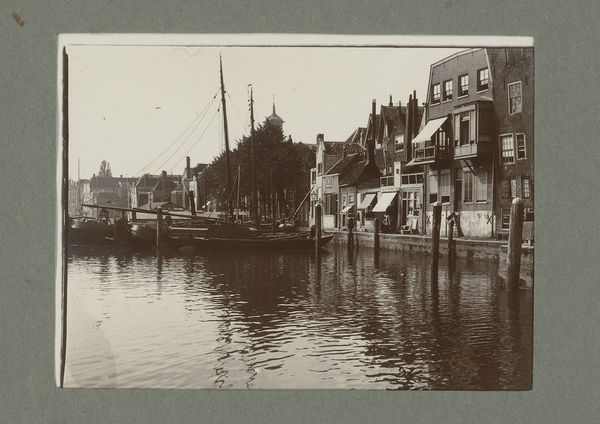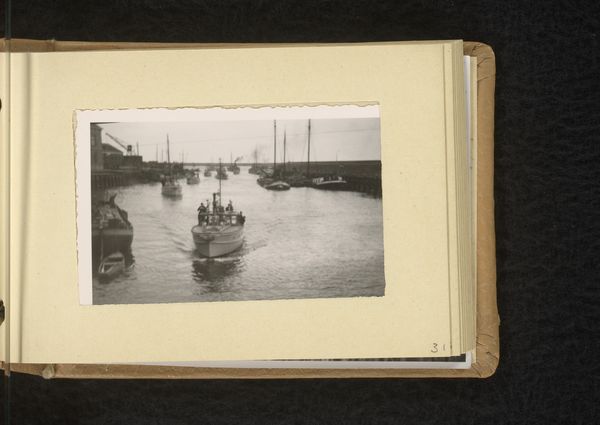
print, photography, albumen-print
#
dutch-golden-age
# print
#
landscape
#
street-photography
#
photography
#
cityscape
#
albumen-print
Dimensions: height 190 mm, width 265 mm
Copyright: Rijks Museum: Open Domain
Curator: This photographic print from around 1929-1931 is titled "Bezoek aan Noord-Holland," which translates to "Visit to North Holland," and it is the work of Berti Hoppe. It appears to be an albumen print. Editor: It's like stepping into a time capsule! The sepia tones give it this wonderfully nostalgic, almost melancholic feel. And is that a photo album page? The layout with different shots, gives it this feeling of curated memory, and maybe lost histories and travels... Curator: Indeed! This particular print presents multiple scenes from North Holland: Edam, views of Amsterdam's Bergweg, Lowengrube, and finally Volendam. Looking at the composition, it invites us to consider the public role these locations held then, and now. Take Edam. A car rolls through the otherwise still street... it's as though the everyday is documented but made to be extraordinary with photography. Editor: Yes, exactly! Consider who these landscapes are "for"—is it documentation, is it romanticism? I can't help but think about the intersection of tourism and identity here. It’s that commodification of place, packaged up. Who is Hoppe showing this place to, and what identities and biases do they potentially bring? Even then it’s not only that –it creates this dialogue with contemporary art by posing pressing questions about urban space in modernity. Curator: Right. The work offers multiple entry points into Dutch cultural history in the early 20th century, as perceived by the middle class perhaps. Photography was growing as a medium and accessible in capturing glimpses into a time. Editor: The very act of photographing and collecting them in an album freezes specific narratives and values. Seeing how the locations were recorded gives some sense of how people related to public space. And this presentation on an album also speaks to intimacy, and how photography was being used for not only for travel albums, but to archive experience itself. Curator: What’s interesting is thinking about photography's role here and, what would Hoppe, or those captured think of this being displayed as an art form within the art sphere? Would this act challenge and open the historical record to interpretation for all, despite Hoppe's intentions? Editor: Food for thought, absolutely! What it means to connect to the historical memory. I think by thinking about these intersecting themes it urges us to explore the photograph on deeper more humanistic level.
Comments
No comments
Be the first to comment and join the conversation on the ultimate creative platform.
